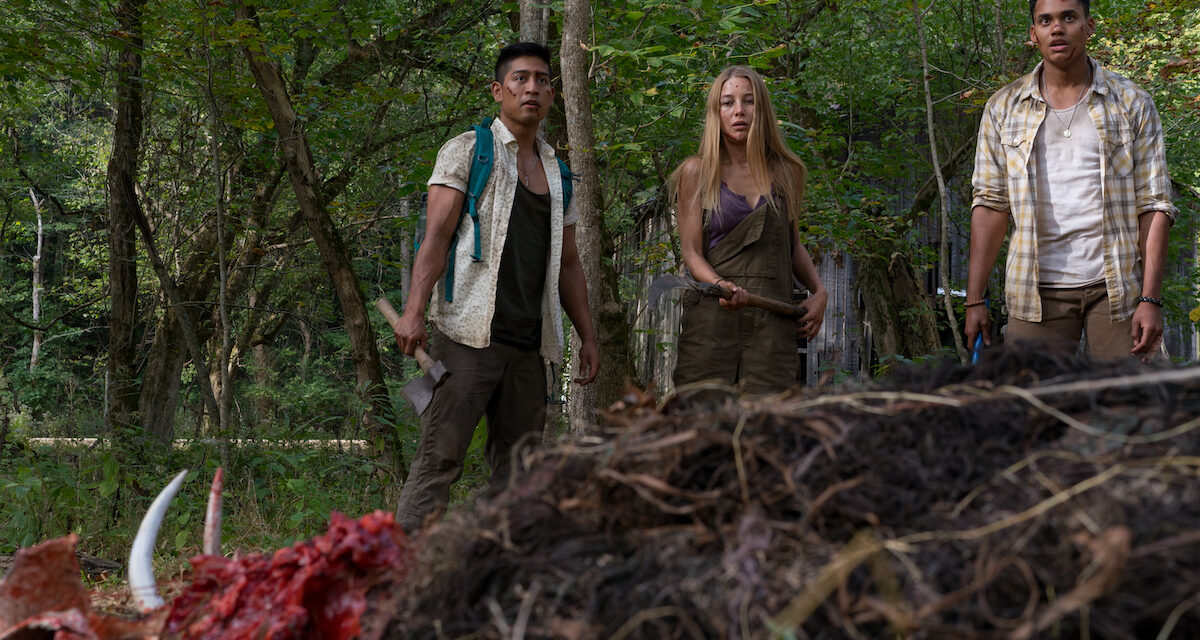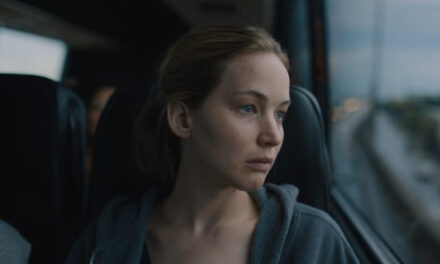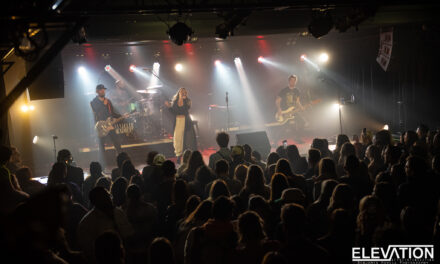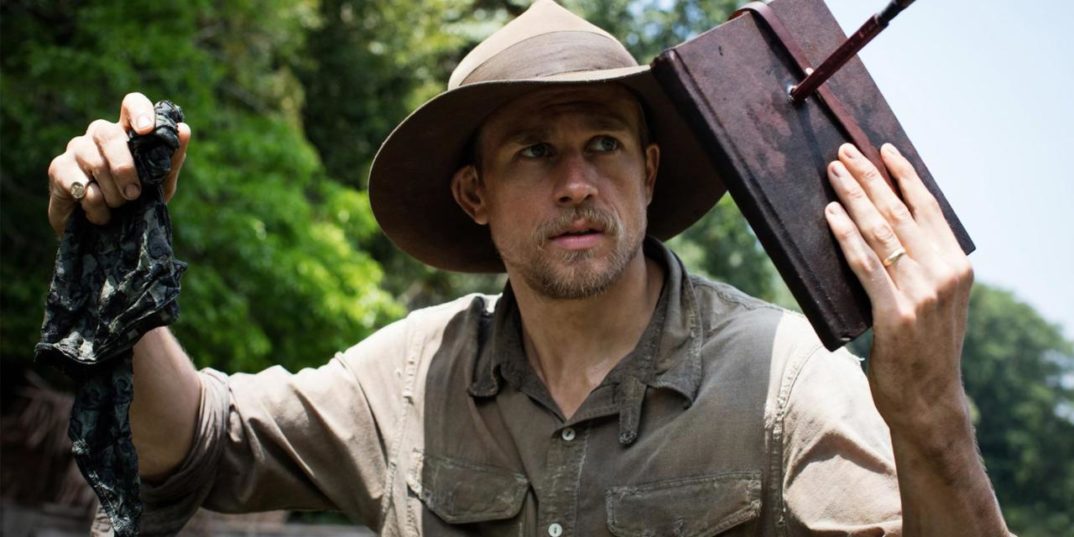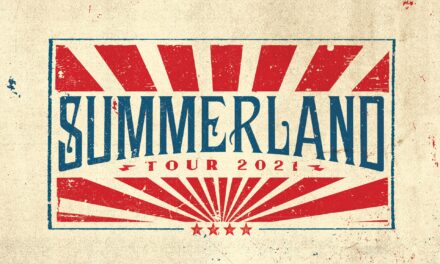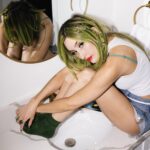It’s a commonality in the horror genre for there to be remakes or reboots of prior franchises. Sometimes creators want to update the story for a modern audience. Others want to build onto the initial mythos of the story or take it somewhere different entirely. The Wrong Turn franchise began in 2003 and continued with six installments up to 2014 with Wrong Turn 6: Last Resort. Seven years later, Director Mike P. Nelson took up the challenge of rebooting the franchise with a fresh coat of paint.
Franchises like Saw or Nightmare On Elm Street that have so many movies within them create expectations. There may be one reoccurring villain and/or storyline that you go into knowing what to expect. 2021’s Wrong Turn may feel familiar, but it works quickly to subvert your expectations. What becomes of that is a carnal horror movie about survival and the different ways of life between distinct groups of people. I spoke to Nelson on his ideas of approaching this reboot, his thoughts on the practical effects, and influences that he drew from while making the film.
Caution: there are spoilers for the film ahead.
I would imagine taking on a Wrong Turn project obviously comes with expectations given that there have been six films prior to this one. The audience already a predisposed opinion on what the Wrong Turn franchise entails. Your film strives to inject new life into doing something completely different. What drew you to doing this re-imaging?
Mike P. Nelson: Back in late 2017, when I read the script for the first time, you almost have all those expectations. Kind of prejudging what I thought this movie was going to be prior to reading it. After I got the script, I was like, “Okay, this is, this is pretty cool.” You still feel you’re going into what do you think it is, and then it just takes that really hard turn. Then you say, “wait a second, what is happening?” I remember being challenged because you go in with these expectations, and then you realize this isn’t your typical Wrong Turn movie. I was kind of expecting the typical Wrong Turn with some updates, but nothing like this. Not only that, but I remember thinking, “gosh, is this is going to work?”
You sit and think about it for a couple of days. Then you think, “ok, this could be really special. We could do something really fun with this.”, We could really subvert not only different expectations, but I could make a movie that is brutal, thought-provoking, and has really great characters. I went through it and came up with some ideas, and pitching the film, it got the attention of Robert Kulzer at Constantine. We kept working on the movie, touching up the script here and there. Then we just went for it.
I think what was really cool about working with this team is we all knew sort of that this was going to a huge shift in the franchise. Everybody was super on board to do that. There weren’t any last-minute reservations or feeling that we should make it a bit more like the other ones. The great thing about working with writer Alan McElroy and Robert was that they were into the idea of doing something bold. It felt refreshing to me, and that was a huge part of joining the project.
When you go into something with people that you’ve never worked with before, you never know what their thought process is going to be and how things are going to change. The constant throughout this project was that we were going to make something bold and challenging. Not everybody’s going to like it because everybody’s going to be expecting something. However, we are going to be making something unique, and be a part of something like that is incredible.
Usually, Wrong Turn would introduce a group of young adults who are trying to get away from inbred mutants that live in the woods. This film begins with a distraught father looking for his missing daughter. Right from the gate, there’s a different tone established in how you present the story. In striving to modernize the Wrong Turn franchise, how did you arrive to make it feel like it was from 2021, both from a narrative and characterization standpoint?
That was part of the conversation from day one. It was making the Wrong Turn for now. One thing that I saw in the project that I thought was unique to judge or stereotype people. That it’s going to get you in trouble. Whereas there are different slasher tropes where kids are having sex or doing drugs, and then the killer comes in and kills them all. Within this film, it’s about some big decisions that our cast makes. It feels like an actual situation. In terms of diversity, this is a group of friends that are very much a reflection of what a group of friends are right now.
I felt it was important to have each character have some sort of backstory or something that they’re dealing with. Something that they’re uncomfortable with and fighting for- as small of a mention as it may be. So, they aren’t just going out to go in the woods. I specifically focus on somebody like Jen, who is intentionally surrounding herself with all these friends who are very successful. They all have great jobs and seem very happy. She’s trying to figure things out. She’s a barista and has a lot of philosophical degrees, but she doesn’t really know where she’s at.
Jen surrounds herself with these people because they know what they want in life. She’s trying to find that. I think all those things are really important. Especially because that’s a mindset that Millennials and Gen Z have, you know what I mean? We needed to mirror that for the movie to have any weight; I think.
The Foundation are deemed as the antagonists of the film, but they operate in a shade of gray. A group of young, diverse people goes up to the woods for the weekend and essentially draws first blood against them. Complete with the actual townspeople outside the woods, you have these competing ways of life everybody can approach things as if they are in the right. Did you want that approach where it keeps the audience conflicted in seeing all these groups that don’t mix?
What’s interesting about that dynamic is that I wanted to show you that there are many sides to everybody. Granted that we have just under two hours to do that. When we were shooting, it was this idea that the audience is going to go into this thinking what they know what it is. In diving deeper into the film, they’re going to realize, “oh, this is completely different.” You have all the characters that also do that in the movie. They think they know that these people in the woods are bad people. They automatically assume that they’re killing people. So, they decide that they are going to kill one of them. Wait, we just killed an innocent person according to The Foundation,
The Foundation has that darkness of brutality and torture that they inflict on people. Anybody who goes against their beliefs. Then, you have the townsfolk who are the Bible Belt, gun-toting, people that we all kind of have a prejudice towards. But guess what? They’ve lost people to The Foundation as well. People that they love and they end up helping.
I think it’s a very uncomfortable idea, and it’s a challenging thing to take in. Just because I think we’re so we’re so used to having defined good and bad guys. I grew up on those types of films. Not only did I get to go to film school, but I also watched a lot of Indiana Jones films, They’re my favorite movies and for the most part, are pretty clear-cut. You have your good guy and bad guy. I loved that this not only challenged me, but I felt like it challenged the audience to look at some of these characters in different ways., To say to themselves,” maybe they have a point. I kind of like what they’re saying, but they are doing this. That’s not good… Oh, man! These guys again. Wait, a second. They’re being helpful.”
It will be confusing and demanding, but it’s also exciting. That’s why I love that this movie can do that and explore those ideas. I think that we’re so quick to judge people around us that we don’t understand.
You spoke about Indiana Jones being an influence and one movie that comes to mind in that series is Temple of Doom. You think about how Spielberg went into darker territory with the beating heart scene and even with the alligators in the end. Jen (Charlotte Vega) transforms into a methodical, survivalist person as you progress in the film. As that rises within her and the group, the practical effects also become more gruesome. Was it important to you to keep everything as practical as possible?
It’s one of it’s literally one of the movies that I watched several times while making. There was a lot of inspiration from that. If you think of structurally how the movies are, Indiana Jones is a very similar thing. Where you have that split almost right in the middle of the movie. Temple of Doom turns into this weird, sacrificial cult thing for a good 40 minutes. Yeah, that’s kind of what we were doing as well.
Keeping practicality was important. It’s the movies that I grew up watching. It’s what I appreciate when I watch films. CGI effects may give you a bit more control. You can reset things and so forth. I often find that it can also come across as being maybe a little too glossy or a bit too perfect. I love the imperfection of practical effects. It gives a very different feel than when you do you know something very compositing or enhanced with CGI.
There were some CGI moments where it’s a big log rolling down a hill and that’s fine. That was kind of our turning point moment. It was scripted from when I read the draft. I felt like that was a fascinating moment because I had never seen anything quite like that before. So that was one that we stuck with. However, for the rest of this movie, even with the smashed head scene, those were practical effects. We put some of his actual face in a practical dummy head that we had smashed open. There’s a grittiness and grotesqueness to that. You can reach out and touch it. You can almost feel it and smell that, you know what I mean?
There’s nothing too glossy about that or the movie itself, either. It’s full of grain and a high shutter speed effect with the camera. We’re going out there just trying to capture things in the moment that feels imperfect. I love that kind of filming. I love that organic style of filmmaking,

